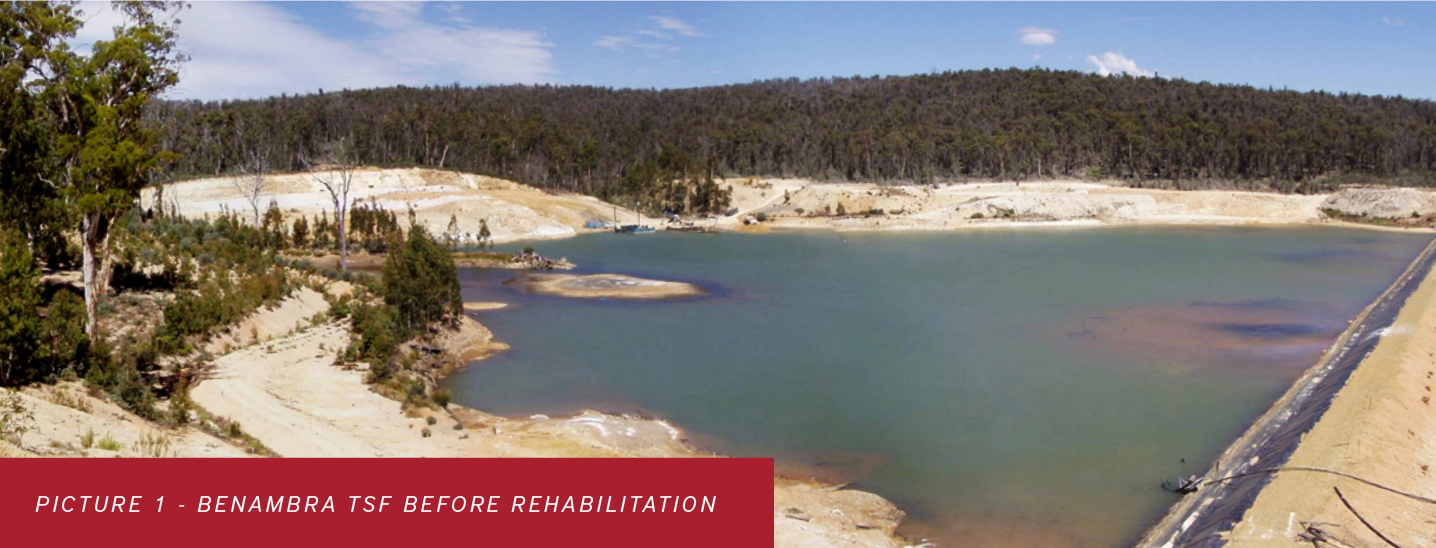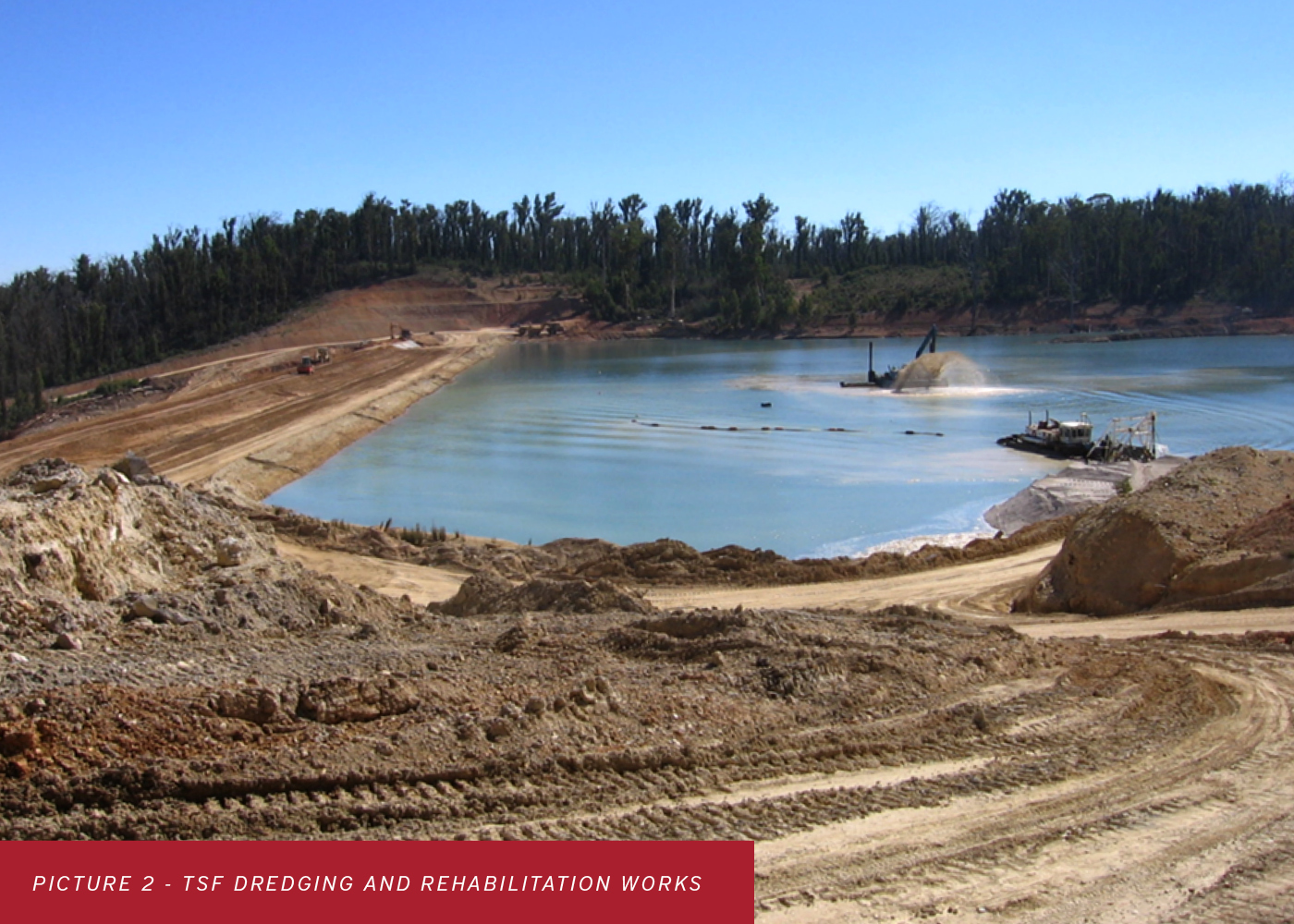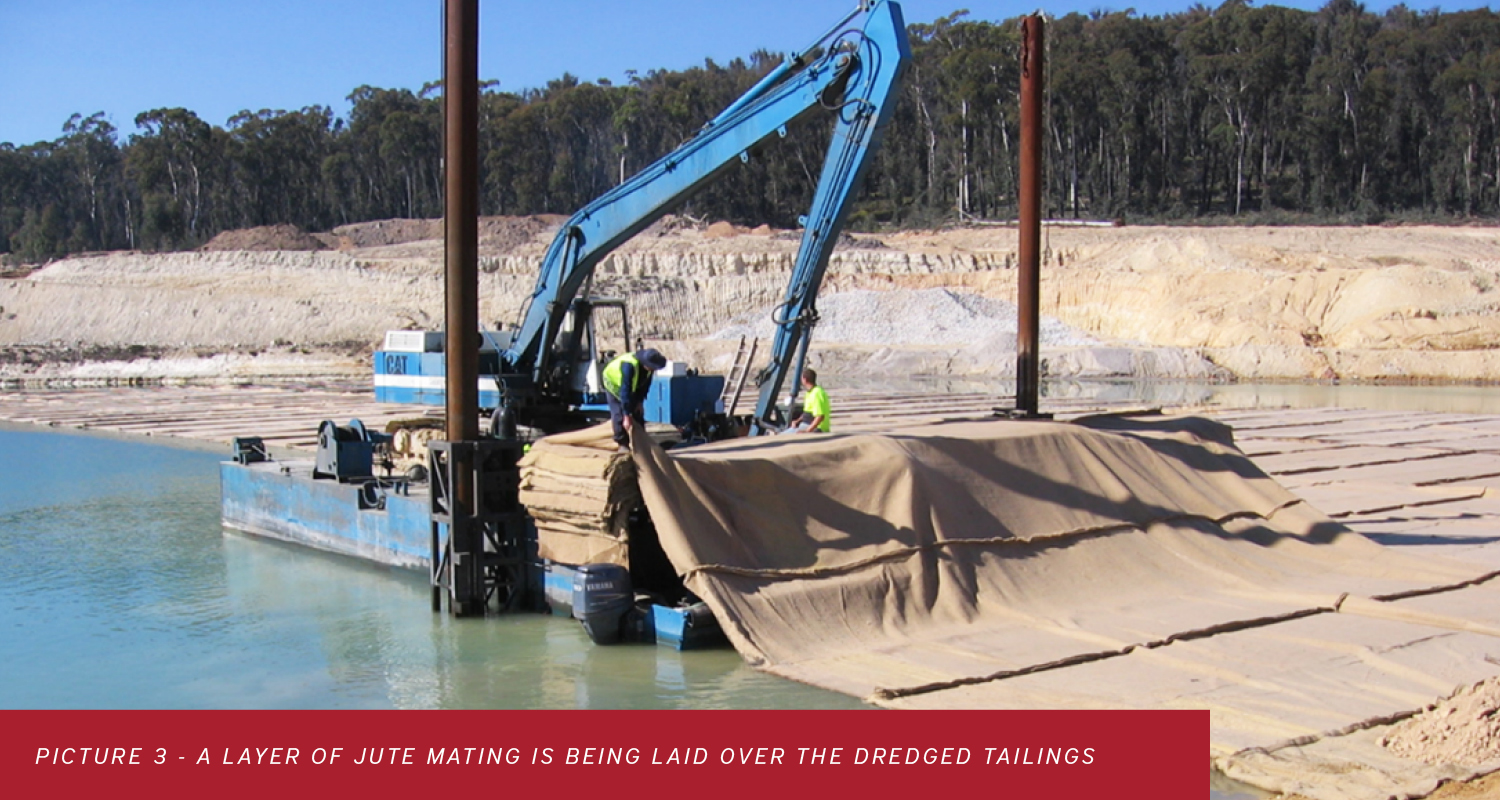Benambra mine is 19km east of Benambra in a remote section of Mount Tambo in East Gippsland, Victoria. The copper-zinc mine was operational between 1992-1996 before being placed into administration. The tailings storage facility (TSF) site is governed by the State of Victoria and monitored by Earth Resources Regulation.
Project Overview
The unplanned closure of the Benambra mine occurred in 1996 when the operator was placed into administration. It was an underground base metal mine producing zinc and copper concentrate but without meeting environmental rehabilitation obligations.
The TSF contained approx. 690,000 tonnes of sulphidic tailings, with the potential to turn acid if exposed to the atmosphere or other oxidising sources. The TSF was upstream of the Tambo River in east Gippsland, Victoria, and a failure could potentially affect the picturesque Gippsland Lakes area to the south.
Rehabilitation Challenges
In 2006, ATC Williams worked with the Victorian Government on a comprehensive whole of Mine Site Rehabilitation Plan. The plan included the long-term closure of the TSF, a Plant Site, a Core Farm and mine roads. The aim was to achieve a stable and environmentally self-sustaining site that conformed to industry best practices and met stakeholder, community and legislative requirements.
The greatest challenge of the site closure was significant geochemical and geotechnical issues that needed to be solved in the long term. Working closely with Earth Systems, our facilities closure team worked to understand the geochemical issues and subsequent requirements for long-term closure. As a result, geochemical designs were integrated into the geotechnical designs for closure.
The principal geochemical requirement was to prevent the 690,000 tonnes of sulphidic tailings from turning acid. A “wet cover” or a water cover of at least 2 m was needed over the tailings to create an anaerobic environment with a near-neutral pH.
Picture 1 (below) shows the TSF before rehabilitation with sulphidic tailings at or above the water and oxidising.

Innovative Rehabilitation Works
The rehabilitation design included dredging the tailings from high points and placing them in low points. The drill core from the core farm (also acid generating) was put into low points in the TSF. Following the core placement and tailings levelling, a layer of “lime sand” (crushed limestone) was added to neutralise the tailings and provide a buffer against turning acid.
Picture 2 shows this activity, along with rehabilitation work on the embankment.

A more novel aspect of the rehabilitation was placing a layer of jute mat over the tailings and lime sand, as shown in Picture 3.
The jute mat was delivered on rolls and cut to suit the width of the barge. The sides were sewn together by Omeo locals and stacked in a concertina fashion for placement. Earth Systems suggested that the jute mat would simulate some ten years of leaf litter, further enhance the anaerobic environment for the tailings and provide protection to turbulent water flow.

Water Management and Earthwork Features
ATC Williams originally designed two water courses diverting around the TSF due to the lack of a spillway. The rehabilitation design reversed this, and a spillway was designed to pass PMP flows.
The natural flow of the two water courses was slightly acidic (around pH 6.5). As a solution, the rehabilitation design included lining the final section of the water courses with limestone cobbles to raise the pH of the stream flow slightly.
Key aspects of the closure design included:
- Installing an up-flow wetland at the toe of the embankment to treat minor seepage flows before release downstream
- Installing a remote reading instrumentation station to provide online data on rainfall, water level, pH and temperature
- Designing the TSF embankment for long-term closure conditions, including the Maximum Credible Earthquake, by flattening the downstream slope of the TSF embankment.
Award Winning Design
Despite the remote location of the site and sometimes adverse weather conditions, ATC Williams completed the project within a 4.5-month timeframe.
The project was subsequently recognised by the industry as an outstanding achievement, winning the following environmental awards:
- 2006 – The Victorian CASE Earth Award for ‘Environmental Excellence.’
- 2006 – The National CASE Earth Award for ‘Environmental Excellence.’
- 2006 – The Australian Mining Magazine Australian Mining Prospect Award for ‘Excellence in Environmental Management.’
Long-term Rehabilitation Continues
In 2020, ATC Williams was invited back by the Victorian Government to assist with an annual site audit.
It is pleasing to report that TSF has continued to perform in accordance with all aspects of the design. In particular, the design depth of the water cover and the pH of the water remains within a suitable range.